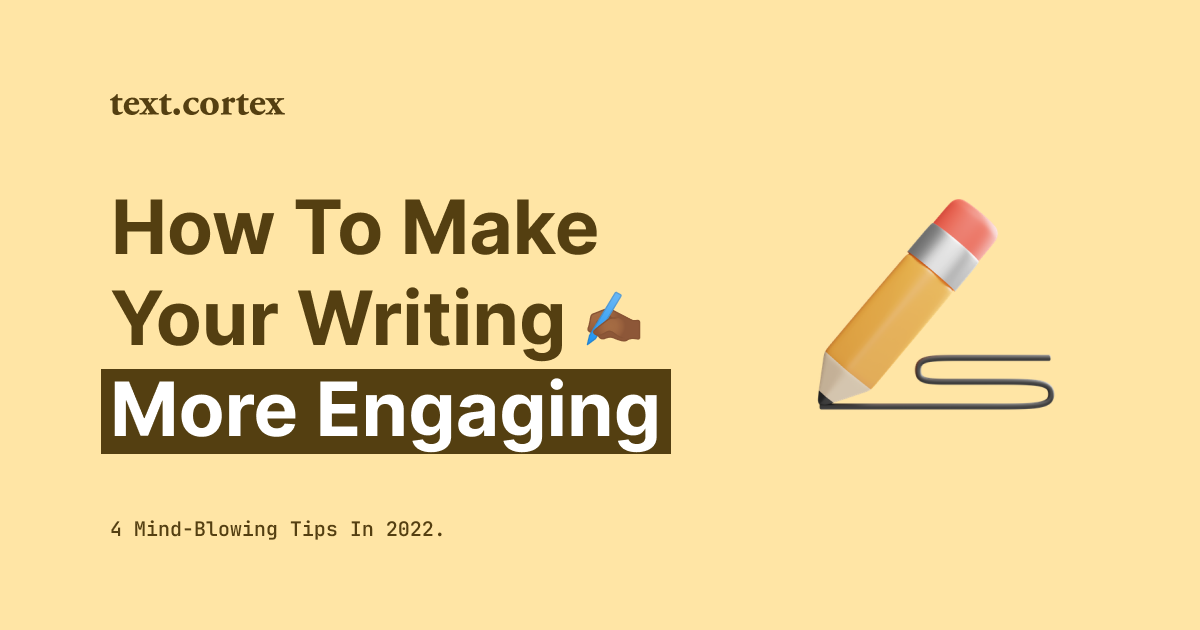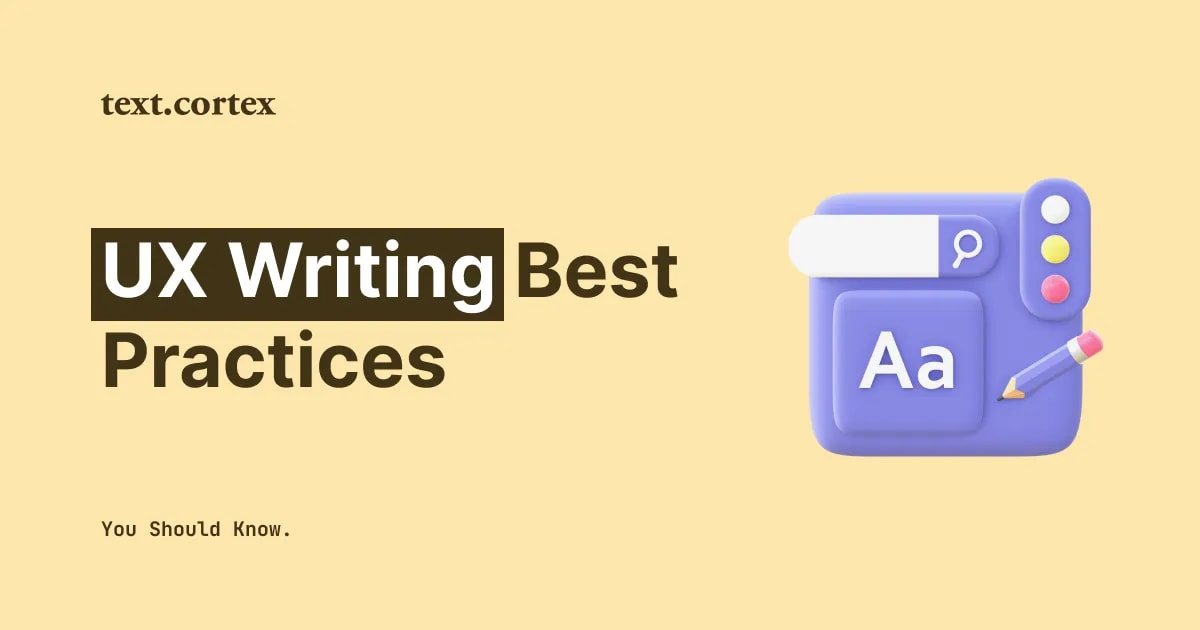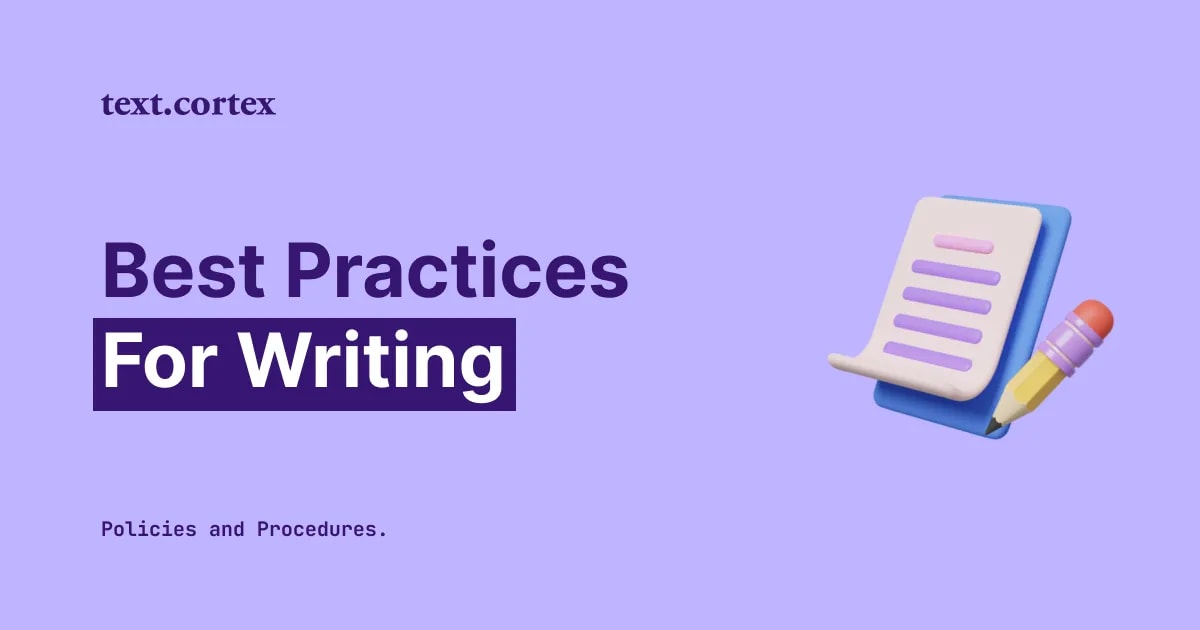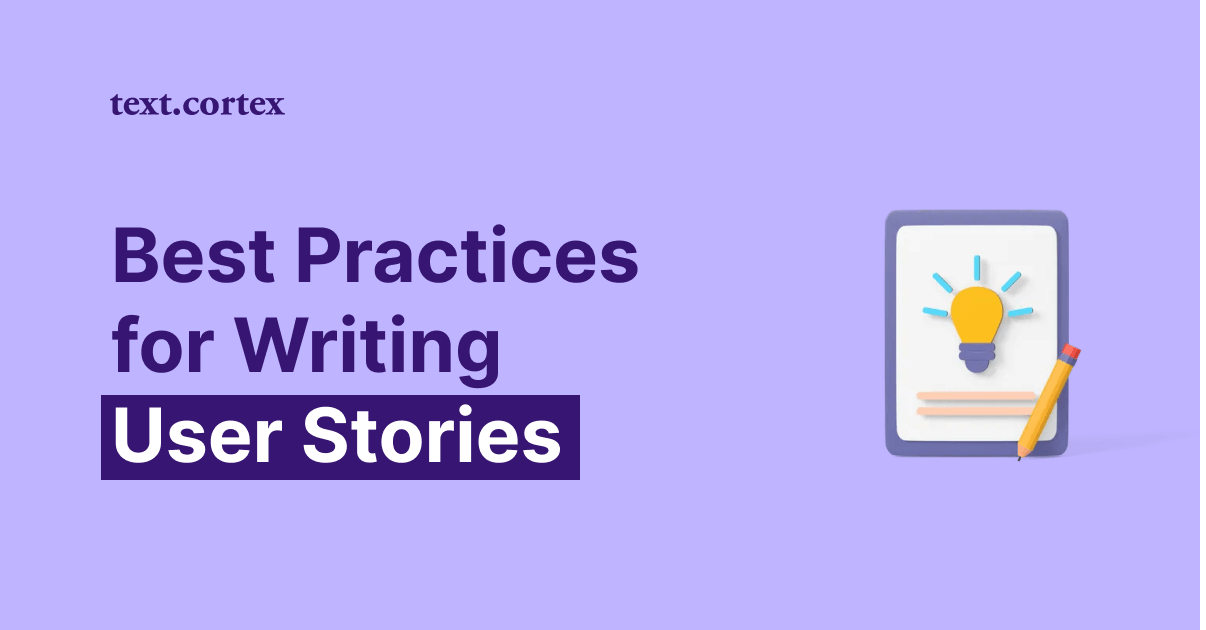Have you ever encountered a dry and dull piece of text while searching for suitable references for a blog post?
For the love of God, don't ever write a plain article just to merely meet a word count requirement. No one likes to read that stuff.
People quickly realize the potential of any content — Jacob Nielsen's research shows that 79% of people scan content rather than reading it word-by-word.
On top of that, many writers are also ignorant of how common writing mistakes affect content engagement, conversion, and abandonment rates.
But what makes the content quality engaging enough?
Today we'll show you 4 tips on how to make your writing more engaging along with examples that you can implement in your writing flow to improve your content's readability.
Let's dive in!🌊
How Do People Read Your Content?
As previously said, people scan text before deciding to read it thoroughly.
As a result, to generate content that is scannable enough for a reader to continue reading, all captivating text must follow specific guidelines. We will get to that soon enough.
But why is that important?
In 1997, Nielsen Norman Group measured the effect of improved web writing analysis that included five different versions of website writing.
The combined version of writing (that utilizes concise, scannable, and objective writing) provided the most spectacular readability results — a 124% increase in usability.
Now that you realize how people read your content, let's look at how to make your writing more engaging and scannable to keep your readers interested in reading it.
How To Make Your Writing More Engaging — 4 Tips For Astonishing Results
1. Keep Your Sentences Simple
One of the first and the most important things when writing your content is that it is clear and understandable for all users.
While some writers make a tremendous effort to make their writing understandable and straightforward to scan, others just adapt their content for the web.
One doesn’t exclude the other. Instead, consider writing paragraphs that will engage your readers.
Here are some best-practice tips to keep in mind when writing your sentences:
- Don’t tease the user — You shouldn’t reveal everything in the first sentence. However, as you go to your point, avoid fabricating the buzz.
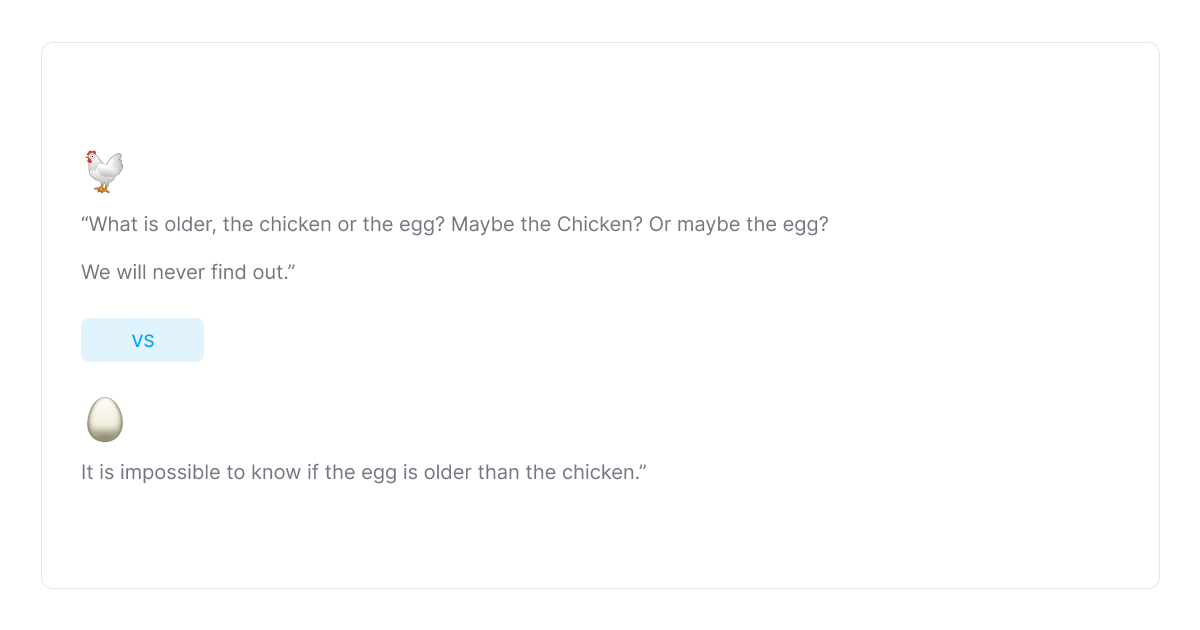
- Start with important information first — Lead your sentences with the most crucial information.
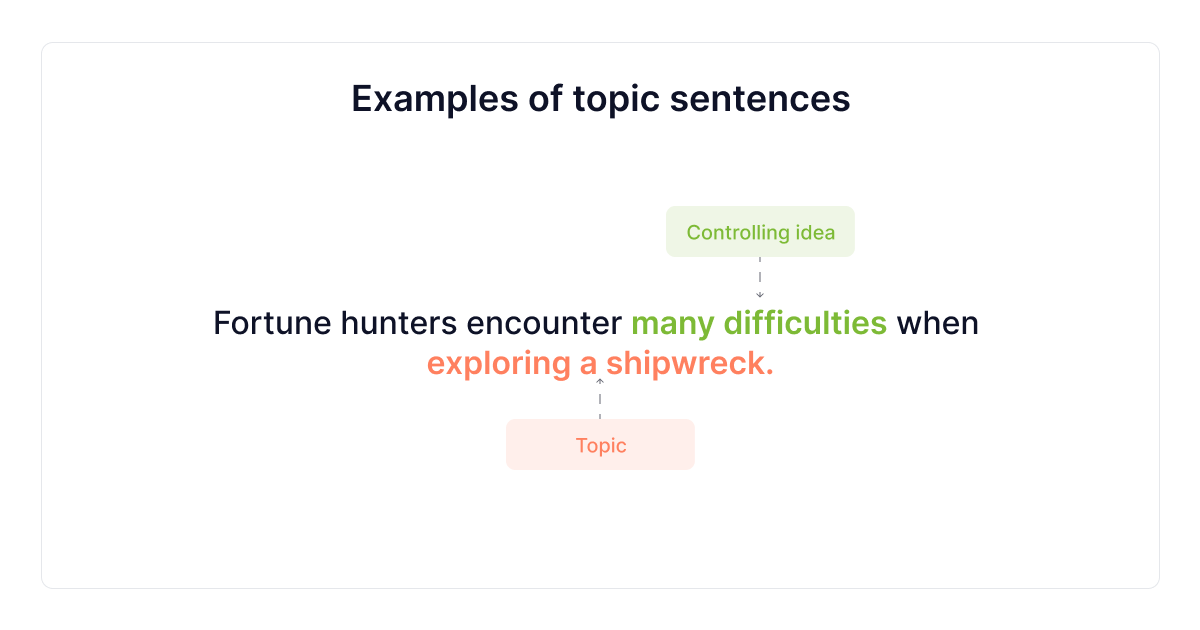
- Rewrite complex sentences — Rewrite sentences that are too complicated and too long for better context and readability. If you are unsure how to do that, you can always include one of the rewriter add-ons (such as TextCortex) to get the most out of your content.
- Avoid subordinate clause as a lead sentence — Avoid using a dependent phrase as a lead sentence, especially at the beginning of a paragraph.
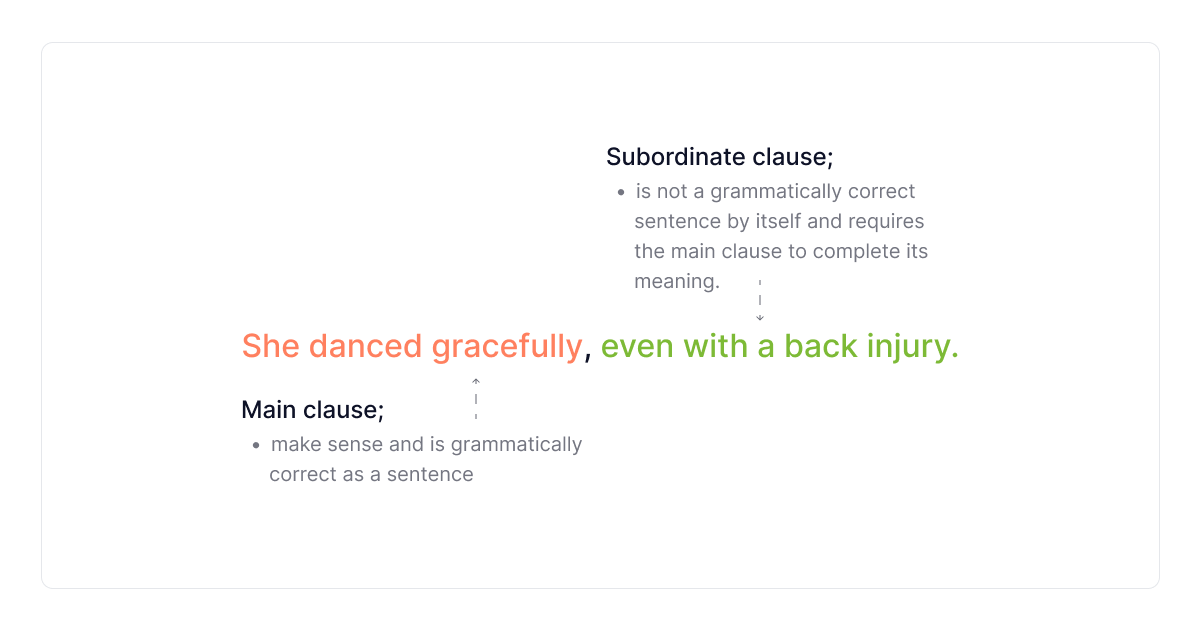
Layout, style, tone, and quality of the content influence reader's perception and engagement with the content. Make sure to craft your sentences so that five years old can understand them.
2. Storytell Your Facts
The second most crucial factor of compelling content is understanding that people love to learn and be entertained simultaneously.
And to do so, you must combine facts (which cannot be changed) with opinions (that are a changeable factor) compellingly.
But how to do that?
Before we get to that, let's first make a clear definition of facts and opinions:
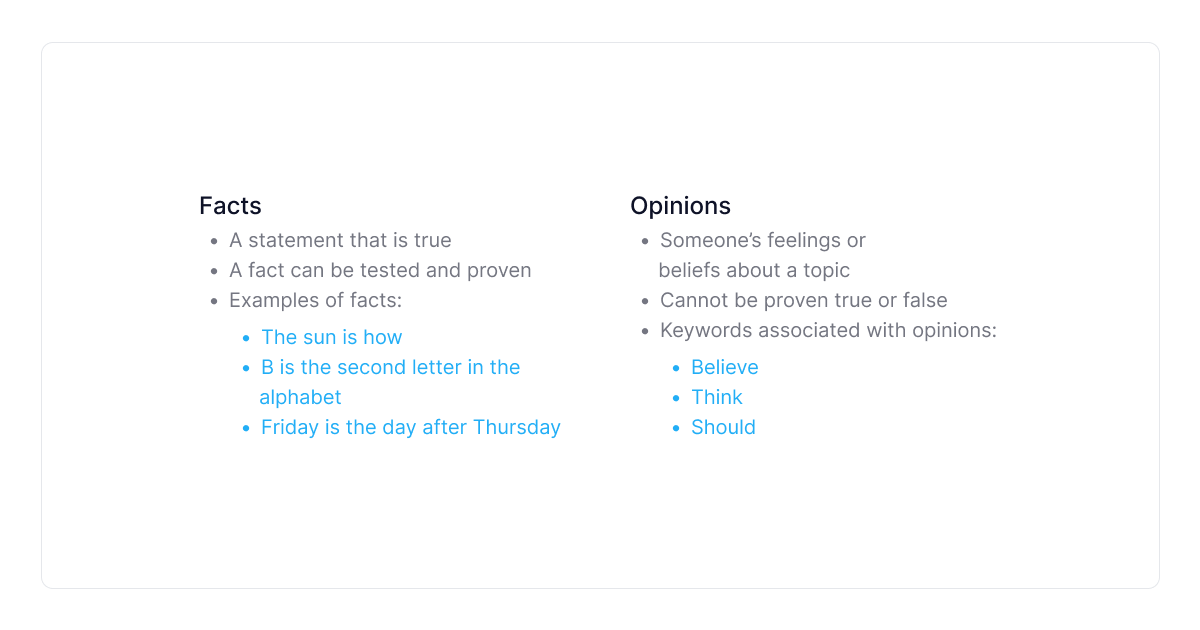
Now that we know which ingredients we need to ‘cook’ the storytelling facts let’s see how to make it engaging and effective.
Here is an example of the fact:
- “In the United States, an estimated 30.8 million adults smoke cigarettes.”
Here is an example of the opinion:
- “I believe that many people smoke out of habit. But I am not sure if they are aware that smoking can damage your airways and the little air sacs (alveoli) in your lungs, causing lung illness.”
Here is how you can combine these two to make a compelling statement:
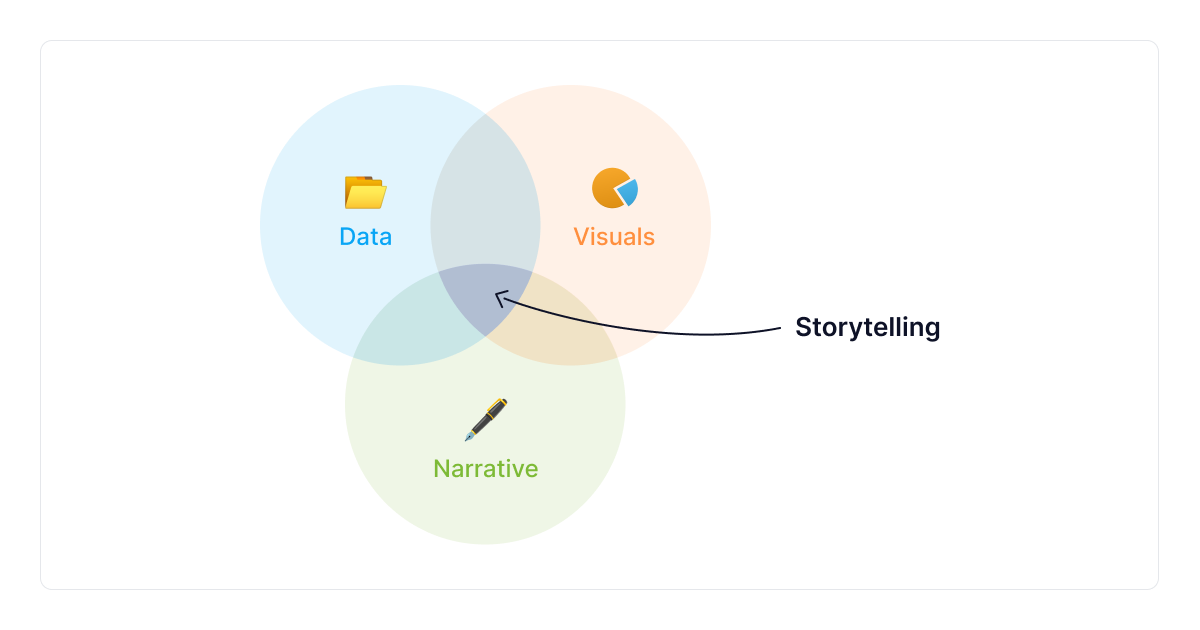
Let’s check out the outcome:
.png)
This is a powerful fact, particularly for people in the US, and there is no guilt in just stating the facts as they are — an experienced journalist would be even harsher.
Even if smokers are aware of these facts, they'll still read them out of curiosity when you write them in a storytelling way.
The image serves as the "hook," and facts are there to make the statement more convincing, but the storytelling is what makes reading those facts less intimidating or overwhelming.
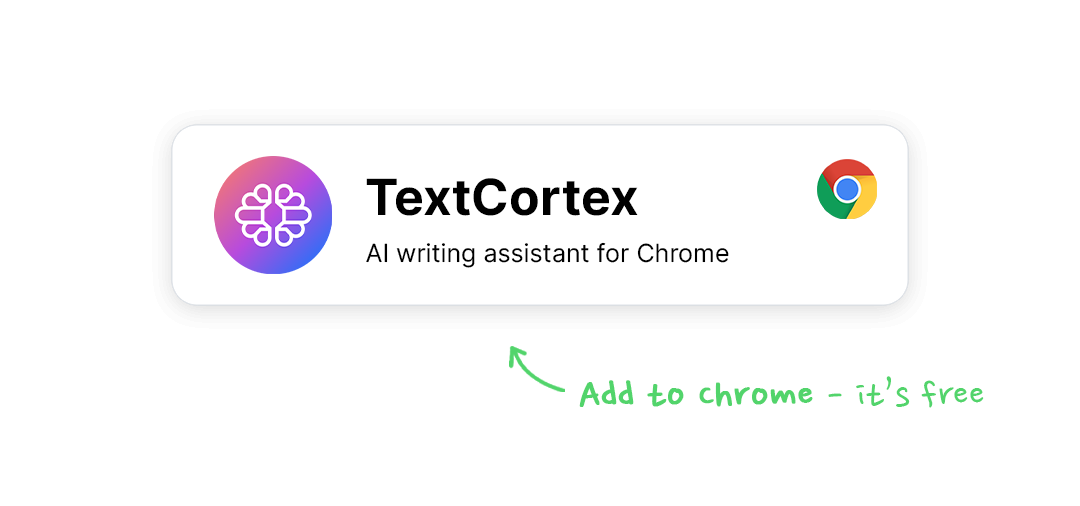
3. Give Your Readers Clear Instructions
Writing an article about a complex subject that demands a lot of technical language requires careful attention to detail.
Visuals in the form of a picture or graphics are a great way to provide in-depth guidance on the subject.
Additionally, reconsider using too technical words that can confuse the reader while he scans through your content.
Here are some pieces of advice to follow up when writing instructions for your readers:
- Define technical terms in place — If you use a sophisticated word such as 'Oscilloscope' (A device used to check oscillations for a CRT), include an explanation in brackets, like I just did. That will bring ultimate clarity to your content.
- Link to pages that have simplified explanations — If you do not have the article that can provide more details to the subject that you can link specific words to, use external sources that users can refer to for more details.
- Spell out and define acronyms — An acronym is a short name for an abbreviation. For example, the acronym "POD" describes writing style because it stands for Post, Over, Decode. For better understanding, you can also spell out your acronyms in brackets.
- Write clear and very descriptive titles — Your titles should be without technical words. Instead, they should include simple instructions. For instance, instead of "How to Write Compelling CTA", write " How To Write Compelling Call-To-Action."
- Use visuals to highlight your point — Employ illustrations, tables, lists, and charts to draw attention to important or related information.
If you are still unsure if your text is too complex, try using the Hemingway free tool.
All you need to do is insert the text and follow the color markers to determine which part of the text needs adjustments:
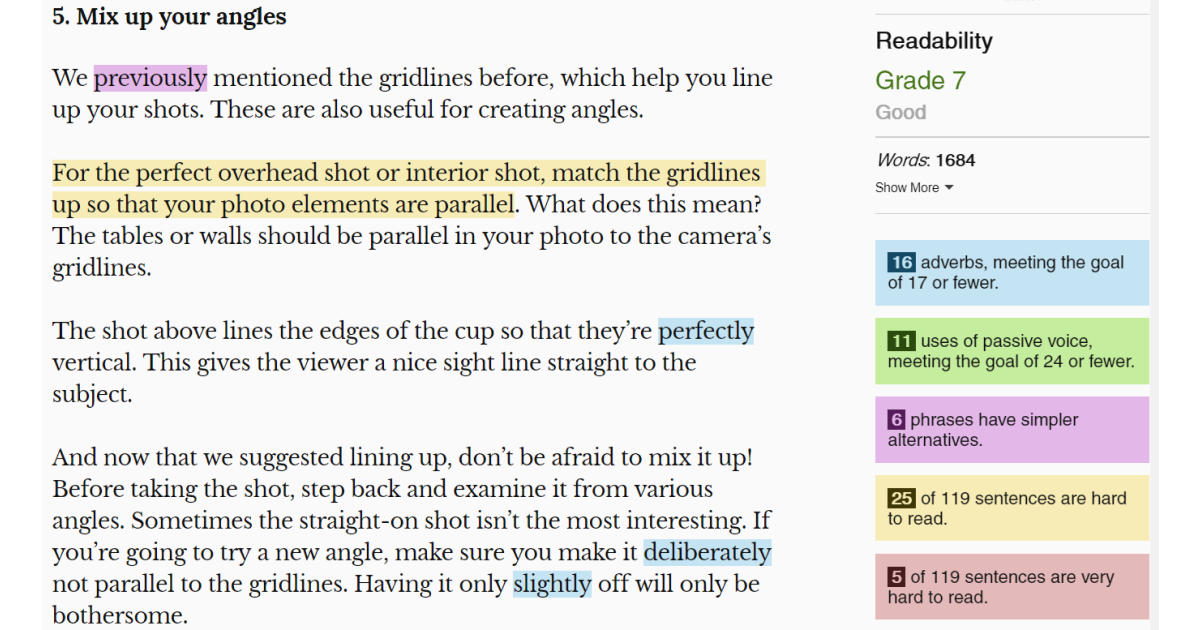
If the reader can't understand how to apply your explanation, he will almost certainly abandon your post.
Furthermore, "complex" explanations might cause an unneeded lack of compliance among users, and missing information can have other negative effects, especially if the user misinterprets something.
4. Include Elements That Attract Eye During Scanning
When we say “elements that attract the eye,” we mean everything that will make a specific part of the text more interesting.
Here are the most effective content elements that you can include in your writing to craft compelling pieces:
1. Headings
Headings (or titles) help people to scan content efficiently.
Make sure your headings have a proper format (for example, bigger letter size and bold) and are on point (describing exactly what the reader can expect in the following section).
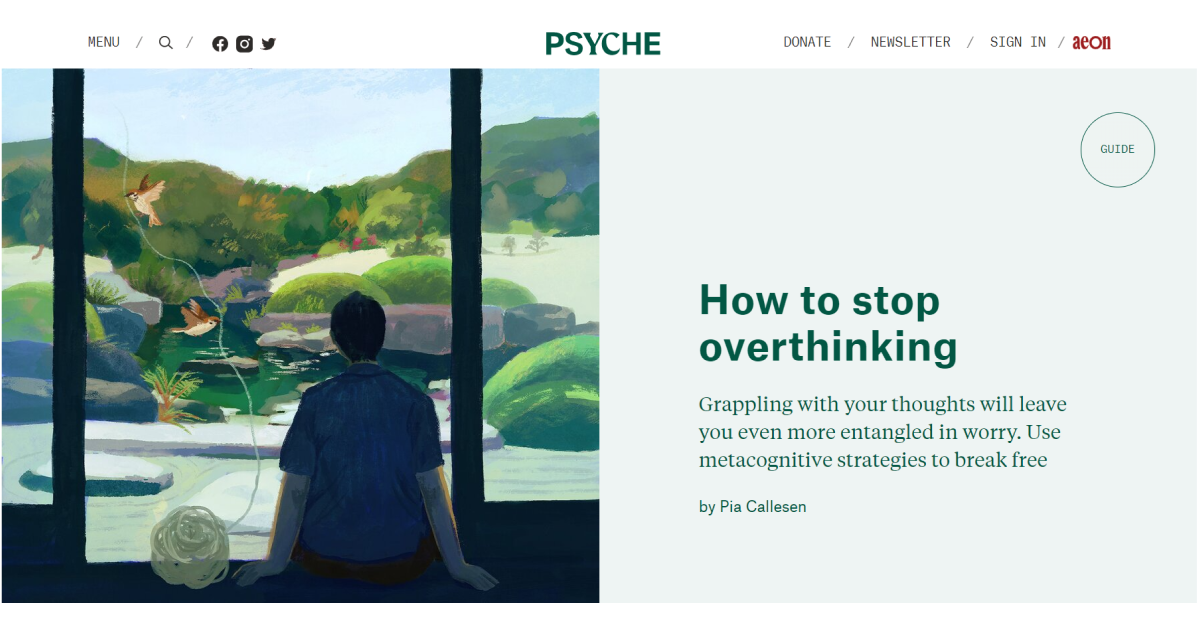
By writing blog titles that stand out, people will quickly scan through your text and be more interested in reading it.
2. Numbers
Numbers are a great way to draw attention because they stand out from the rest of the text. You can use them in your titles like in this example:

Or, within the text:
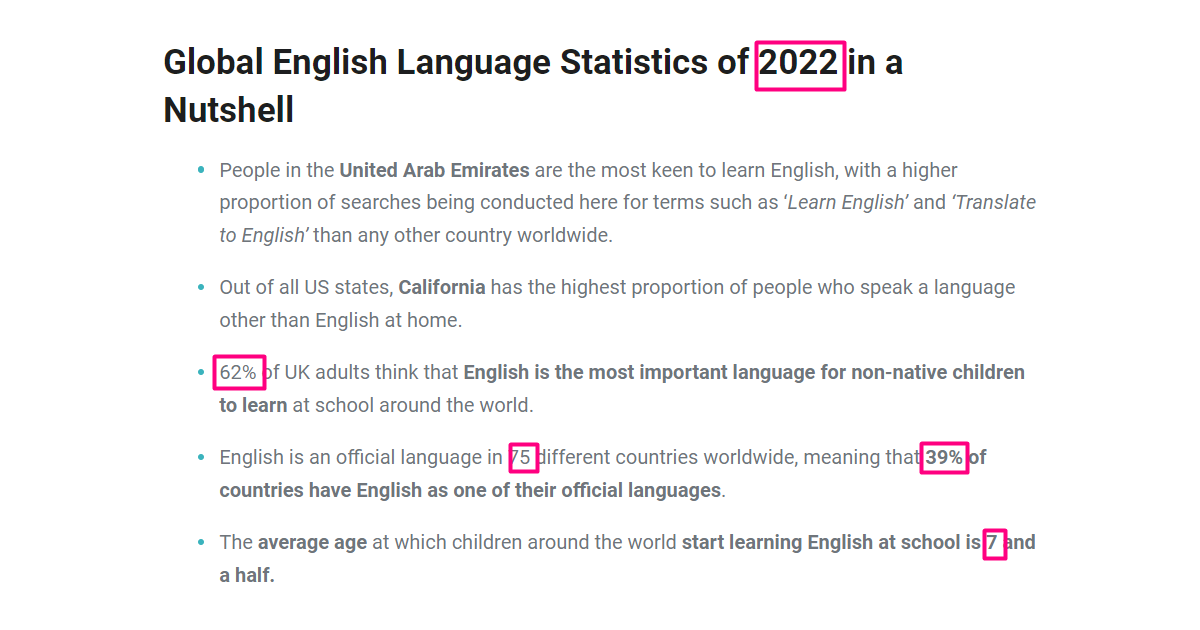
Readers spot numbers immediately and focus on the information around the numbers in your text.
3. Capital letters
Whether you want to use all capital letters or only first letters in caps, they are different from the rest of the text and will grab the reader’s attention.
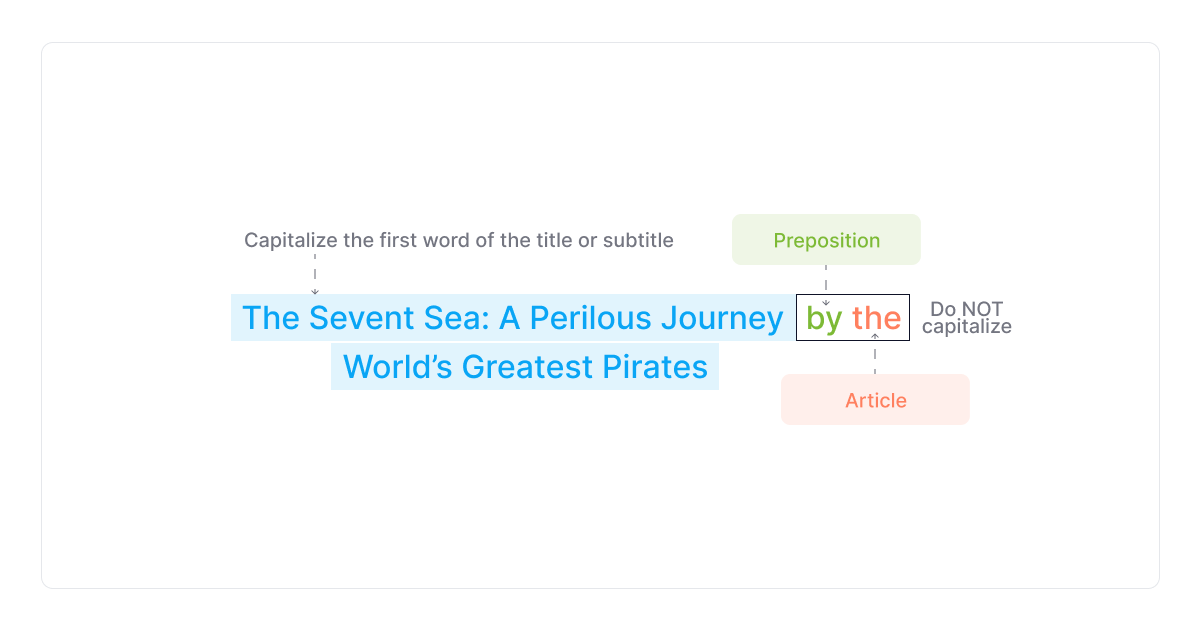
You can experiment with capital letters when writing titles and subtitles.
4. Adjacent characters
Other word shapes that can capture the user's attention during scanning include:
- Long words
- Quote marks
- Parentheses
- Trademarks
- Words that were closely related to the subject the user was interested in.

For example, you can start standing out pieces of your text with adjacent characters by using Italic font when asking questions or quotations and bold font with longer or compelling words.
5. Lists and bullets
Bullets and lists are something we use when we want to get to the key points quicker (such as benefits) or summarize a more significant portion of the text.
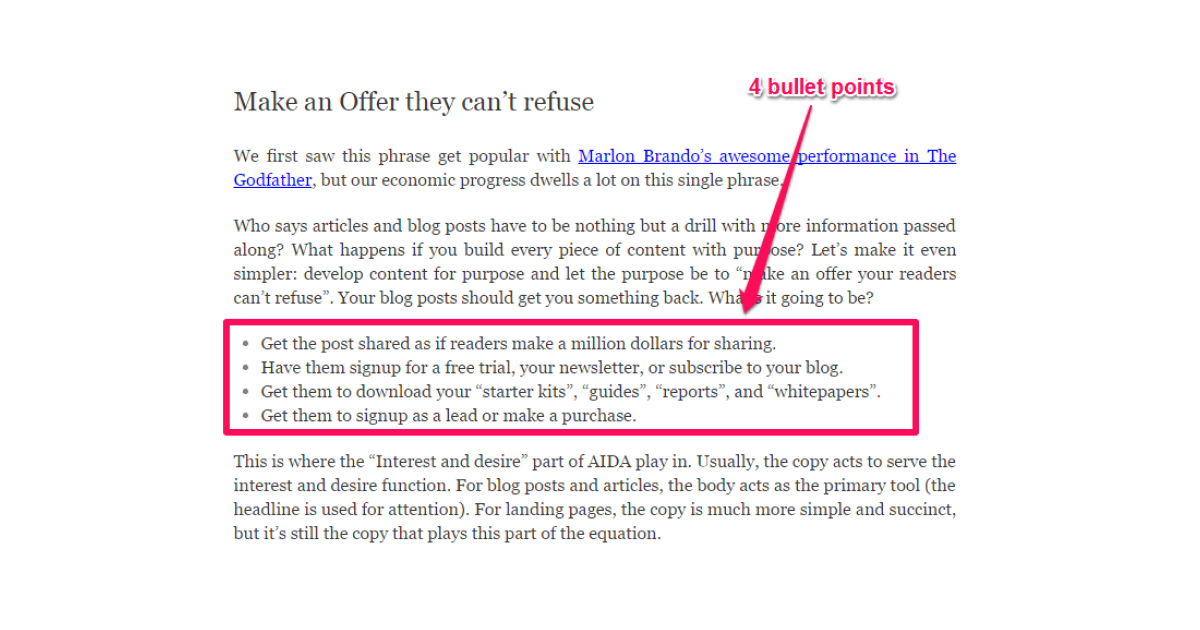
It turns out that lists and bullets are pretty effective when attracting attention — people look at 70% of the bulleted lists in the content.
6. Tables
Tables also tend to attract attention, especially those with clear titles and minimal amounts of text.
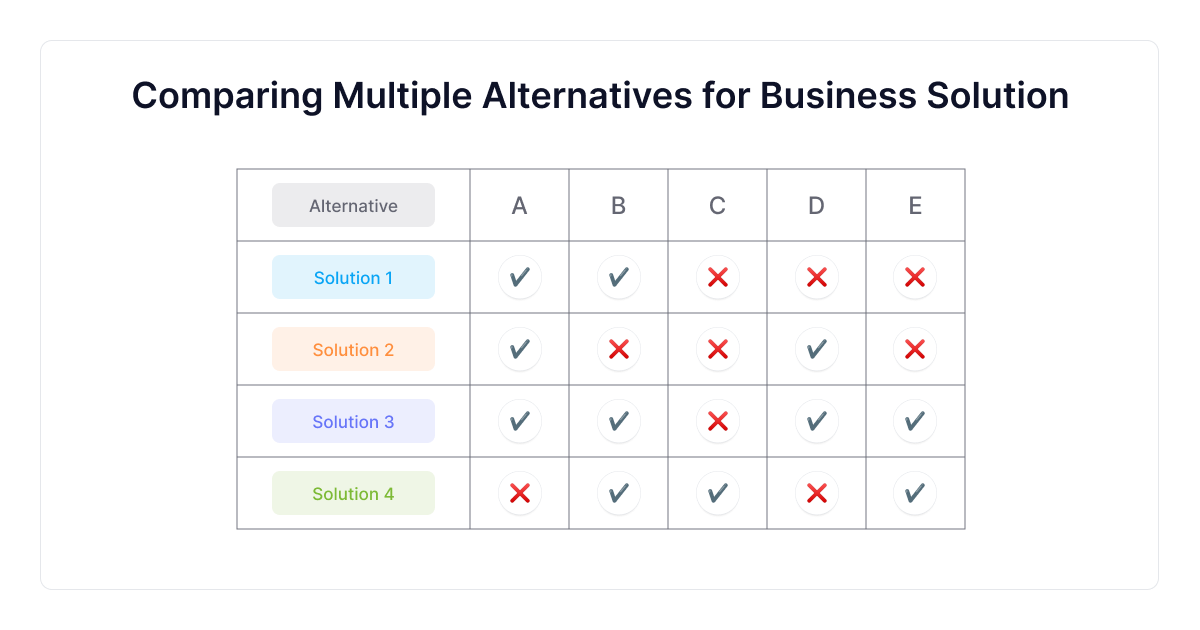
We can use tables to represent benefits, features, functionalities, comparisons, prices, etc., in a more organized manner.
According to Jacob Nielsen’s analysis, too many links, headlines, and bolded words undercut the goal because they no longer stand out from the rest of the text.
In that situation, people often stop scanning for these no-longer-special parts of the text, and such behavior is known as over-differentiation.
Additionally, per the same Nielsen analysis, simplifying content from 9th grade to 8th-grade readability level brings fantastic results:
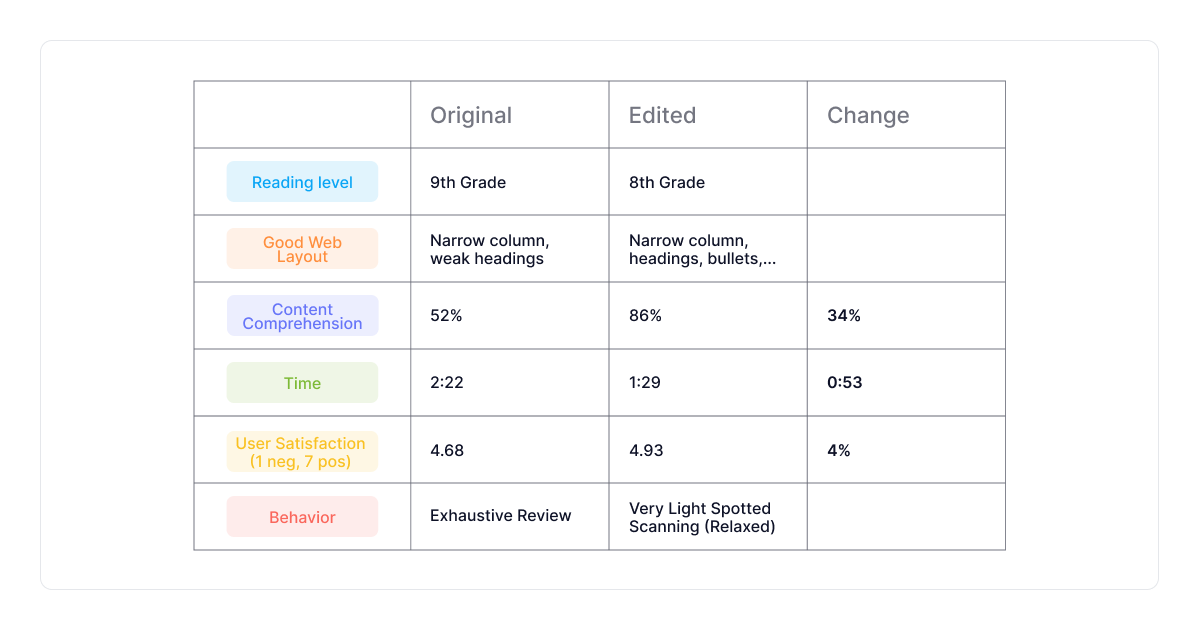
Tailoring your information to the way people read it enhances engagement and makes it much easier to absorb.
According to the table above, it will impact user satisfaction, behavior, and content consumption.
To Sum Up
As you can see, understanding how people consume your content is crucial to delivering the quality they demand.
These fundamentals will save you time and effort when crafting your content.
But let me remind you that the writing process can be streamlined even further than you think -- for that purpose, we created TextCortex.
It will take away 80% of your writing work by consistently providing you with unique, fresh, and compelling text that sounds like a human wrote it.
The web application allows you to generate blog articles, product descriptions, cold emails, ads, social media posts, and titles in more than 70 languages.
At the same time, our Chrome rewriting extension allows you to rewrite your paragraphs, extend sentences, and generate blog posts and cold emails from the comfort of any textbox.
The best part is that you can try our free version with 15 creations per day without feature limitations.
Sign up today, and watch how TextCortex consistently generates natural-sounding and high-quality content while boosting your writing skills.

